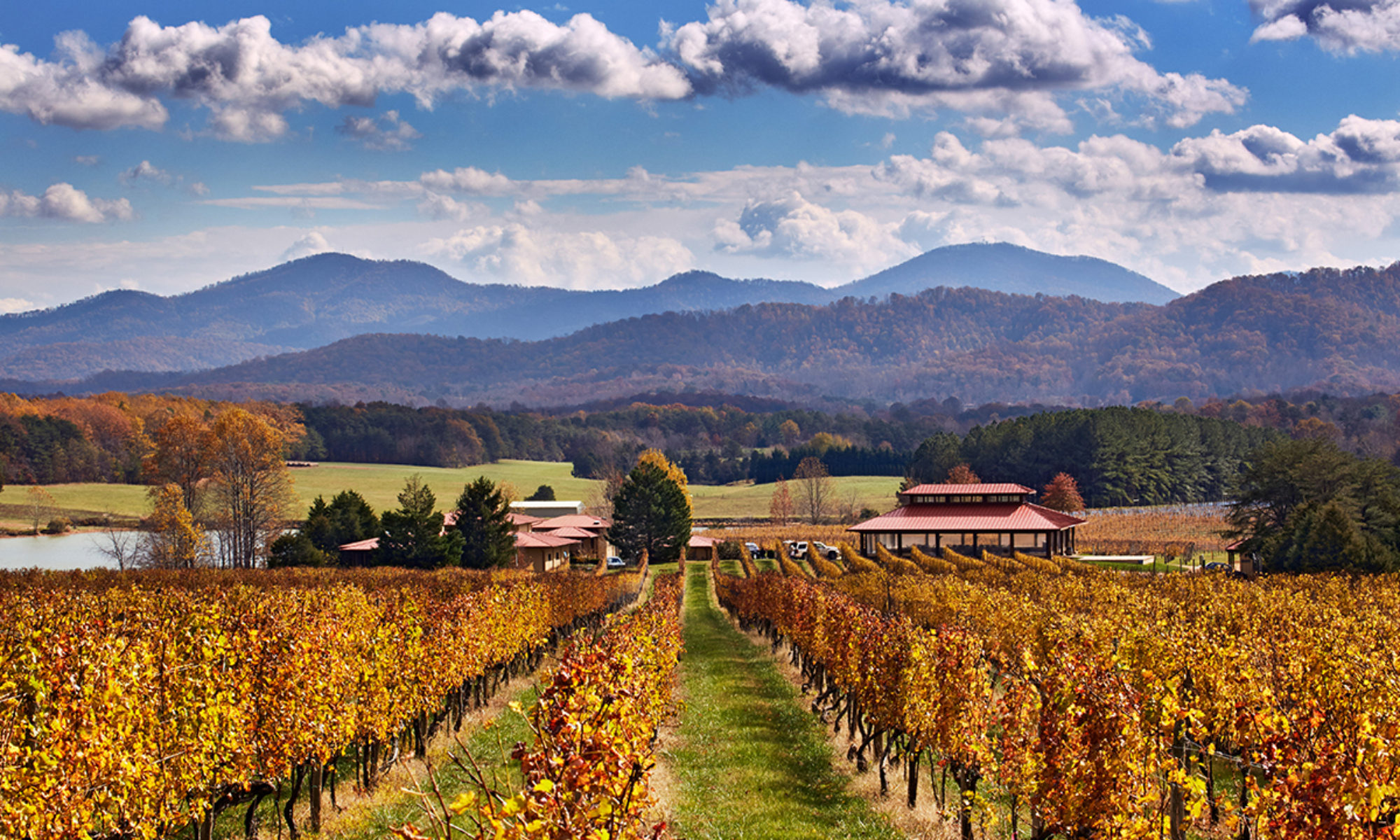Opened in 2021, Ecco Adesso is located in Fairfield, Virginia, just north-east of Lexington in Rockbridge County. Owners Cierra and Michael Weatherly converted a former private residence into one of the Shenandoah Valley’s higher-end wineries. The winery’s name translates to “Here Now,” in the vein of Carpe Diem or “Seize the Day.”
Wine: Tier II. Ecco Adesso is still in the planting phase of their vineyards. However, in the near term you can enjoy the property and other high-end Virginia wine. The winery is for now serving wine from Early Mountain Vineyards, one of the top producers in Virginia, as well as from Midland Wine. Midland Winery is a nearby property run by the Jordan family, whose son Tim Jordan is the manager of Ecco Adesso’s new vineyards. Jordan’s local experience has shown that the area’s high elevation allows Ecco Adesso to plant not only European standard vinifera types, but also grapes that are very unusual for Virgina, notably the Saperavi grape which is a mainstay of Georgian wine, and Langrein, a mainstay of the Trentino-Adige region of northern Italy. No doubt highly distinctive wines will be testable here when the vines have sufficiently matured.
Setting: One star. Ecco Adesso is a very large, 350-acre property, with an also enormous castle-like building. Tasting wine can be done in the main room or library, as well as on the winery’s outside balcony. A second outdoor tasting room is in the works, with musical events planned for the future. There are cottages organized as Airbnbs for those wanting to make it a long night with Ecco Adesso wines, or to spend time hiking on the property or in the nearby Blue Ridge Mountains. Children and dogs are welcome here.
Stories. Robert E. Lee’s final resting place. The Presbyterian Scotch-Irish who first settled the western frontier of Virginia established several early churches in the Shenandoah Valley. The Scotch-Irish also believed in the importance of education, and along with the houses of worship in the Valley created one of Virginia’s first institutions of higher learning, Augusta Academy – the future Washington & Lee University. As a history of the university notes “It was the Presbyterian faith of the Scots, emphasizing a well-educated clergy which could produce informative sermons, that was principally responsible for this interest in education.” Established in 1749 and originally located in Mount Pleasant, Augusta Academy was renamed Liberty Hall in 1776’s wave of revolutionary fervor. Only William & Mary has an older pedigree among Virginia’s universities. The school got the attention of none other than George Washington, who in 1796 – then still President of the United States – endowed it with a gift of $20,000 in stock of the James River Canal Company; at the time this was one of the largest gifts ever made towards education in the new country, and the gift continues to fund costs today. The School removed to its present location further down the Valley, in Lexington. In gratitude, Liberty Hall was renamed in honor of President Washington. Then came 1865, and a certain Robert E. Lee was looking for a new job: the former General in charge of Confederate forces found one in the Presidency of Washington University. He served as the college’s President until his death there in 1870, and was succeeded as President by his son, George Washington Custis Lee. In 1870, Robert E. Lee was buried on the school’s campus, and the institution’s name was changed to Washington & Lee – with their future athletic teams acquiring the nickname “Generals.” Robert E. Lee’s wife, his parents, and his seven children were all buried in the Lee Chapel on campus – which Robert E. Lee had built in 1868. Lee rests not beneath his recumbent stone effigy, sculpted by Edward Valentine for the chapel, but rather in the chapel’s crypt. Lee’s beloved horse, Traveller, is buried outside the chapel.
